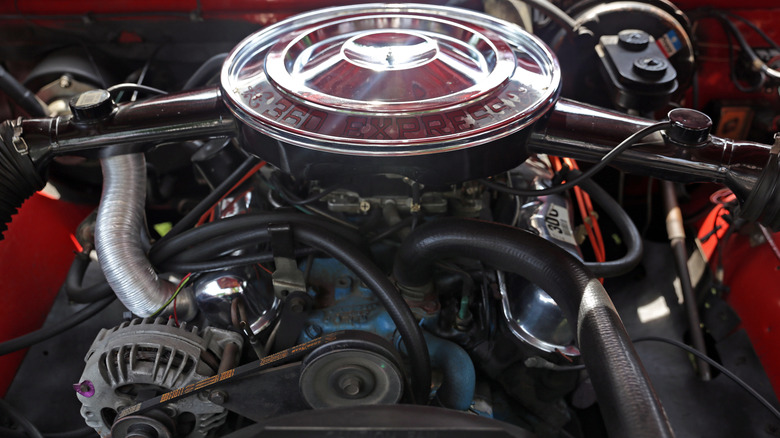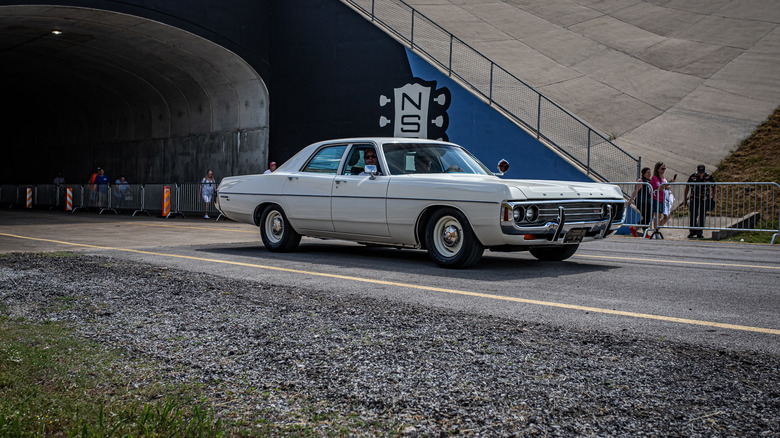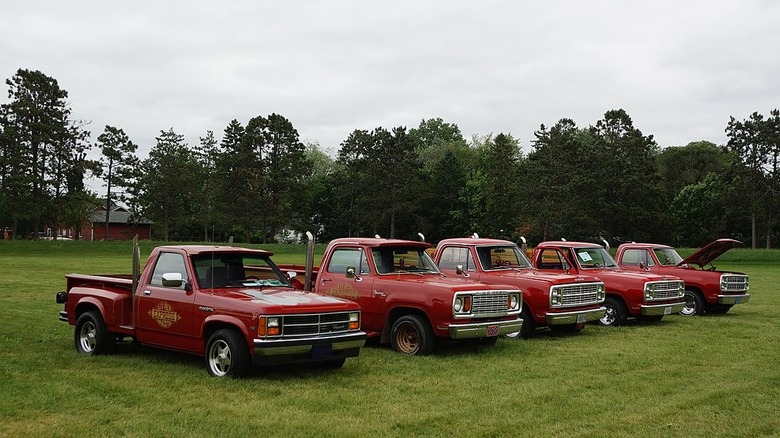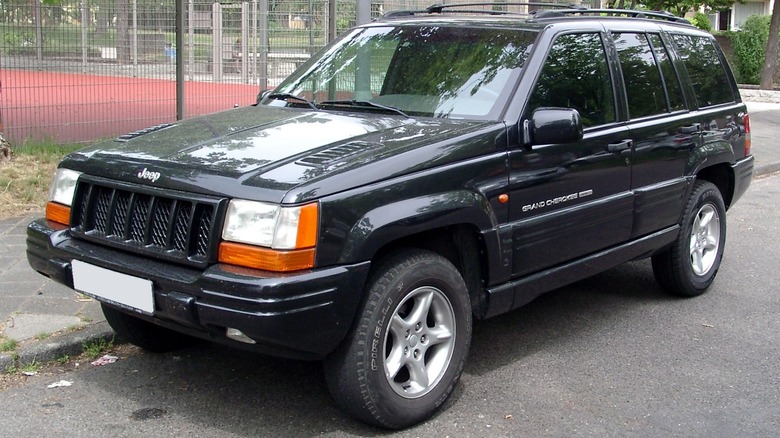The Best And Worst Years For The Mopar 360 Engine
If you want to start an argument among a group of automobile enthusiasts, simply ask, "What is a Mopar?" The brand is a portmanteau of "motor" and "parts" and was established by Chrysler in 1937 as the automaker's parts and accessories division, and the term has since come to cover all the actual car and truck brands Chrysler has owned. Initially, that meant Chrysler, Plymouth, Dodge, and DeSoto, although DeSoto went under in 1960. When Chrysler acquired Jeep along with AMC in 1987 and started labeling Dodge trucks as Rams in 2009, those two badges became part of the Mopar family, even to most purists.
Fiat bought Chrysler in 2014, and Fiat-Chrysler joined forces with the Peugeot group in 2021 to form Stellantis. Even the most inclusive gearheads would stop short of lumping Peugeot or Citroën in with older Mopar brands, mostly because the cars from those French makers share little in common with their distant Dodge, Plymouth, AMC, and Jeep cousins.
The Mopar brands had their heyday in the 1960s and 1970s, highlighted by the production of some memorable AMC muscle cars and the development of more than a half-dozen versions of the venerable slant six engine.
Mopar hoods also shrouded some large and powerful big block V8s and V10s – but a small-block 360 cubic inch lived in various forms from 1971 through the late 1990s and persisted through a couple of major design changes.
[Featured image by Mr. Choppers via Wikimedia Commons|Cropped and scaled|CC-By 3.0]
Mid-'70s 360s were hindered by smog restrictions
These LA and Magnum series 360s aren't to be confused with AMC's 360-inch V8, which powered various AMC and Jeep models from 1970 through 1991. That AMC motor was such a powerhouse that Chrysler kept it in the Jeep lineup after purchasing the brand in 1987.
For now, let's focus on the Mopar 360 that first appeared in 1971 as a midpoint between Chrysler's existing 318 and 383 cubic inch V8s. The 360 was first offered as an option in the Plymouth Fury and Dodge Polara and as standard equipment in the Chrysler Newport Royal, all of which were built on the C-body platform.
Initially, it was topped with a two-barrel carburetor that gave it 255 gross horsepower and 360 lb-ft of torque (via Motales). A truck version came in 1974, with a four-barrel carb, mild cam, and 200 horsepower and 290 lb-ft of torque. A California-legal version of the four barrel appeared the next year and dropped those numbers to 190 horsepower and 270 lb-ft. These smog restrictions didn't quite put a potato in the tailpipe, but the mid-'70s versions of this motor had some of the lowest output numbers of any Mopar 360 V8.
The 360 powered the Lil' Red Express pickup
The four-barrel's primary barrel was enlarged again for a hot cam 360 that ran through 1979 in Plymouth Duster and Dodge Dart models. This version of the 360 made 230 horsepower and 300 lb-ft of torque.
1978 and 1979 were probably the strongest years for the early version of the Mopar 360. The E58 police edition of the 360 was used in the Dodge Lil' Red Express, a "muscle truck" that Car and Driver tested to be the fastest American-made vehicle from zero to 100 mph (via Dodge Connection). The LRE's 6,100 pound weight allowed Dodge to sell it without a catalytic converter, and the dual semi-truck style exhausts helped the truck's 360 produce 225 horsepower and 295 lb-ft of torque.
The 360 in the 1978 and 1979 Lil' Red Express was the most powerful version of that engine to date, but the 1987 and later truck engines got roller tappets in place of flat tappets. Using roller lifters cut down on friction in the valve system, helping these engines last a little longer between valve adjustments and overhauls than the earlier models.
[Featured Image by Greg Gjerdingen via Wikimedia Commons|Cropped and scaled|CC-By 2.0]
1990s 360s got true fuel injection and more power
Throttle body fuel injection first topped truck versions of the 360 in 1988, and in 1993, the 360 was updated to the Magnum series. Many of the engine's dimensions stayed the same, but the deck height was reduced by 14 thousandths of an inch. The throttle body was ditched in favor of a multi-port fuel injection system, and the intake, cylinder heads, and rockers were all upgraded. A new rear main seal helped slow oil leaks, and the entire engine was re-balanced to reduce vibration and noise.
The LA series 360 got further refinements as the '90s wore on, and by 1998 the version of the 360 that went in the ZJ series Jeep Grand Cherokee Limited could produce 245 horsepower and 345 lb-ft of torque (via Automobile Catalog). The Magnum 360 persisted through 2003 in Dodge trucks and vans before it was replaced by the slightly smaller third generation Hemi, which blew the 360 away with its peak output of 350 horsepower and 375 lb-ft of torque (via Dodge Garage).
[Featured Image by Rudolf Stricker via Wikimedia Commons| Cropped and scaled|Public Domain]



